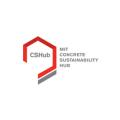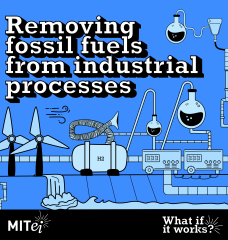
Roads are the backbone of our society and economy, taking people and goods across distances long and short. They are a staple of the built environment, taking up nearly 2.8 million lane-miles (or 4.6 million lane-kilometers) of the United States’ surface area.
These same roads have a considerable life-cycle environmental impact, having been associated with over 75 megatons of greenhouse gases (GHG) each year over the past three decades in the United States. That is equivalent to the emissions of a gasoline-powered passenger vehicle traveling over 190 billion miles, or circling the Earth more than 7.5 million times, each year.
By 2050, it is estimated that pavement sector emissions will decrease by 14% due to improvements like cement clinker replacement, but it is possible to extract a 65% reduction through measures like investing in materials and maintenance practices to make road networks stiffer and smoother, meaning they require less energy to drive on. As a practical example, consider that in 2022, vehicles in the United States collectively drove 3.2 trillion miles. If the average surface roughness of all pavements were improved by 1%, there would be 190 million tons of CO2 saved each year.
One of the challenges to achieving greater GHG reductions is data scarcity, making it difficult for decision makers to evaluate the environmental impact of roads across their whole life cycle, comprising the emissions associated with the production of raw materials to construction, use, maintenance and repair, and finally demolition or decommissioning. Data scarcity and the complexity of calculation would make analyzing the life cycle environmental impacts of pavements prohibitively expensive, preventing informed decisions on what materials to use and how to maintain them. Today’s world is one of rapid change, with shifting weather and traffic patterns presenting new challenges for roads.
In a new paper in Resources, Conservation and Recycling, authored by a team of researchers from MIT Concrete Sustainability Hub (CSHub), a new streamlined framework is proposed to enable the life-cycle assessment (LCA) of pavements with limited data.
“Conducting pavement LCA is costly and labor-intensive, so many assessments simplify the process using fixed values for input parameters or only focus on upfront emissions from materials production and construction. However, conducting LCA with fixed input values fails to account for uncertainties and variations, which may lead to unreliable results. In this novel streamlined framework, we embrace and control the uncertainty in pavement LCA. This helps understand the minimum amount of data required to achieve a robust decision” notes Haoran Li, a postdoc at CSHub and the study’s lead author.
By keeping the uncertainty under control, the CSHub team develops a structured data underspecification framework that prioritizes collecting data on the factors that have the greatest influence over pavement’s life-cycle environmental impacts.
“Typically, multiple pavement stakeholders, like designers, materials engineers, contractors, etc., need to provide extensive input data for conducting an LCA and comparing the environmental impacts of different pavement types,” says Hessam AzariJafari, deputy director of the CSHub and a co-author on the study. “These individuals are involved at different stages of a pavement project and none of them will have the necessary inputs for conducting a pavement LCA.”
The proposed streamlined LCA framework reduces the overall data collection burden by up to 85 percent without compromising the robustness of the conclusion on the environmentally preferred pavement type.
The CSHub team used the proposed framework to model the life-cycle environmental impacts of a pavement in Boston that had a length of one mile, four lanes, and a design life — or “life expectancy” — of 50 years. The team modeled two different pavement designs: an asphalt pavement and a jointed plain concrete pavement.
The MIT researchers then modeled four levels of data specificity, M1 through M4, to understand how they influenced the range of life-cycle assessment results for the two different designs. For example, M1 indicates the greatest uncertainty due to limited information about pavement conditions, including traffic and materials. M2 is typically used when the environment (urban or rural) is defined, but detailed knowledge of material properties and future maintenance strategies is still lacking. M3 offers a detailed description of pavement conditions using secondary data when field measurements are not available. M4 provides the highest level of data specificity, typically relying on first-hand information from designers.
MIT researchers found that the precise value for greenhouse gas emissions will vary from M1 to M4. However, the proportionate emissions associated with different components of the life cycle remain similar. For instance, regardless of the level of data specificity, embodied emissions from construction and maintenance and rehabilitation accounted for about half of the concrete pavement’s greenhouse gas emissions. In contrast, the use phase emissions for the asphalt pavement account for between 70 and 90 percent of the pavement’s life-cycle emissions.
The team found that, in Boston, combining an M2 level of data specification with an M3 knowledge of maintenance and rehabilitation produced a decision-making process with 90 percent reliability.
To make this framework practical and accessible, the MIT researchers are working on integrating the developed approach into an online life-cycle assessment tool. This tool democratizes pavement LCA and empowers the value chain stakeholders, such as departments of transportation and metropolitan planning organizations, to identify choices that lead to the highest-performing, longest-lasting, and most environmentally friendly pavements.






